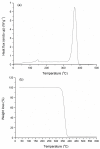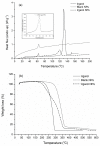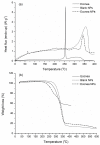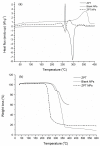Encapsulation of Antifouling Organic Biocides in Poly(lactic acid) Nanoparticles
- PMID: 28952560
- PMCID: PMC5746748
- DOI: 10.3390/bioengineering4040081
Encapsulation of Antifouling Organic Biocides in Poly(lactic acid) Nanoparticles
Abstract
The scope of the current research was to assess the feasibility of encapsulating three commercial antifouling compounds, Irgarol 1051, Econea and Zinc pyrithione, in biodegradable poly(lactic acid) (PLA) nanoparticles. The emulsification-solvent evaporation technique was herein utilized to manufacture nanoparticles with a biocide:polymer ratio of 40%. The loaded nanoparticles were analyzed for their size and size distribution, zeta potential, encapsulation efficiency and thermal properties, while the relevant physicochemical characteristics were correlated to biocide-polymer system. In addition, the encapsulation process was scaled up and the prepared nanoparticles were dispersed in a water-based antifouling paint in order to examine the viability of incorporating nanoparticles in such coatings. Metallic specimens were coated with the nanoparticles-containing paint and examined regarding surface morphology.
Keywords: PLA; antifouling; biocides; encapsulation; marine applications; nanoparticles.
Conflict of interest statement
The authors declare no conflict of interest.
Figures











References
-
- Yebra M., Kiil S., Dam-Johansen K. Antifouling technology—Past, present and future steps towards efficient and environmentally friendly antifouling coatings. Prog. Org. Coat. 2004;50:75–104. doi: 10.1016/j.porgcoat.2003.06.001. - DOI
-
- Chambers L.D., Stokes K.R., Walsh F.C., Wood R.J.K. Modern approaches to marine antifouling coatings. Surf. Coat. Technol. 2006;201:3642–3652. doi: 10.1016/j.surfcoat.2006.08.129. - DOI
-
- Almeida E., Diamantino T.C., de Sousa O. Marine paints: The particular case of antifouling paints. Prog. Org. Coat. 2007;59:2–20. doi: 10.1016/j.porgcoat.2007.01.017. - DOI
-
- Omae I. Organotin antifouling paints and their alternatives. Appl. Organomet. Chem. 2003;17:81–105. doi: 10.1002/aoc.396. - DOI
LinkOut - more resources
Full Text Sources
Other Literature Sources

